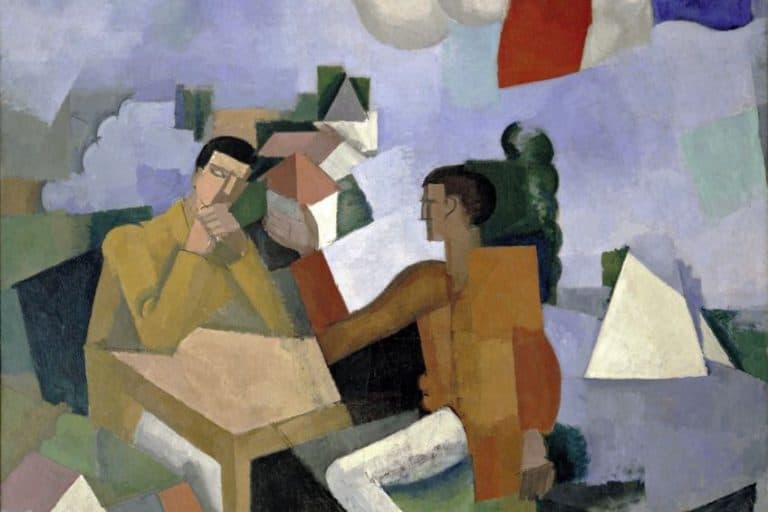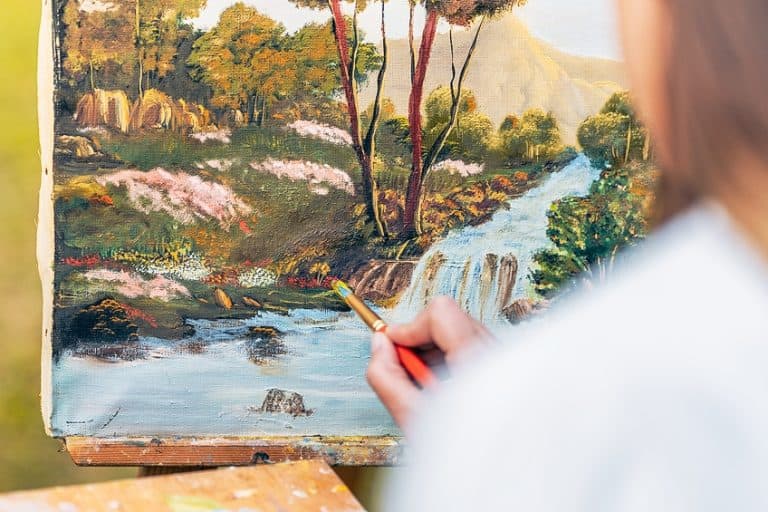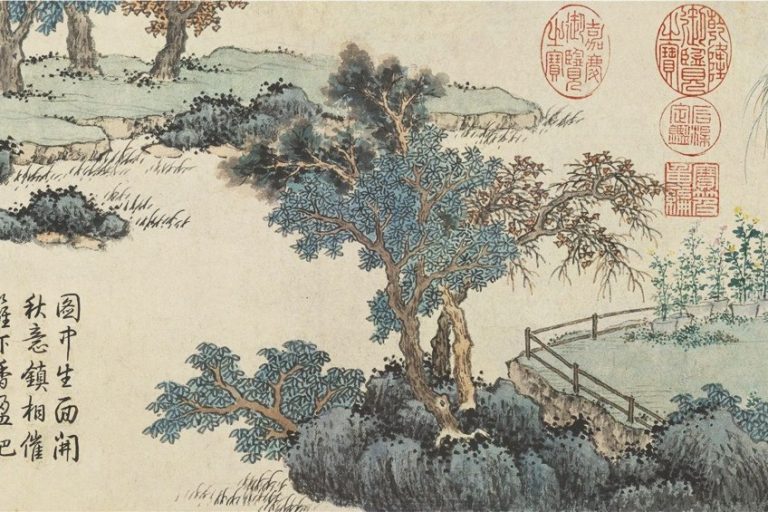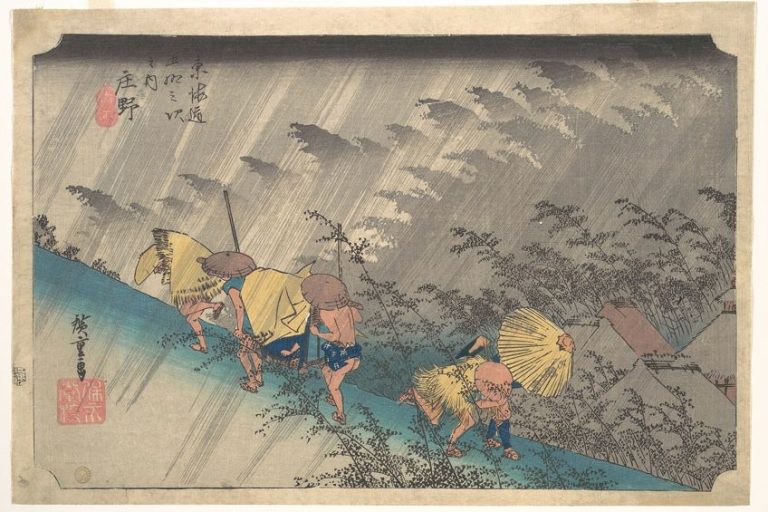1970s Art – Trace the Emergence of the Counterculture
Welcome to the vibrant and electric world of 1970s art! A decade defined by disco beats, bold colors, and boundary-pushing creativity, the 70s unleashed a kaleidoscope of artistic expression unlike any other era. From the groovy streets of New York City to the funky studios of London, artists of all stripes pushed the limits, challenging conventions and redefining the very essence of what art could be. Join us on a journey back in time as we explore the glittering disco balls, the psychedelic murals, and the rebellious spirit that defined the art scene of the 1970s. It’s a wild ride you won’t want to miss!
Key Takeaways
- The 1970s art scene was driven by a spirit of innovation, challenging traditions through new movements and social commentary.
- Artistic mediums expanded to include performance, space, and environment, making the viewer an active participant.
- The decade’s art movements and artists set the stage for contemporary art, deeply influencing its direction and discourse.
Emergence of Counterculture Movements
The 1970s witnessed the emergence and evolution of various counterculture movements that questioned mainstream norms and sought societal change. They often challenged the status quo through art, advocating for alternative lifestyles and political reform. The 1970s saw the continuation and evolution of influential artistic movements.

The Hippie movement, rooted in peace and love, inspired vibrant, psychedelic art. Feminist artists critiqued patriarchy through various mediums, seeking gender equality in the art world. Anti-war activists used stark imagery to protest the Vietnam War and militarism. These movements reflect the decade’s social upheavals and aspirations for change. This period’s counterculture was characterized by a communal spirit and a dedication to individualism as well as a critical eye on consumerism. It was a blend of old beats and new voices, from the bohemian enclaves of the 50s to the diverse landscape of the 70s counterculture, sprouting from San Francisco’s Haight-Ashbury to various urban areas and college campuses.
The art produced by these movements was not only a reflection of their ideologies but also a catalyst for social reform and cultural transformation.
Influential Art Movements of the 1970s
The 1970s marked a period of expansive creativity and experimentation, with artists exploring new mediums and challenging traditional boundaries of art. From the hyper-realistic canvases of Photorealism to the social agendas of Feminist Art, each movement of the decade contributed uniquely to the fabric of 1970s culture and art styles.
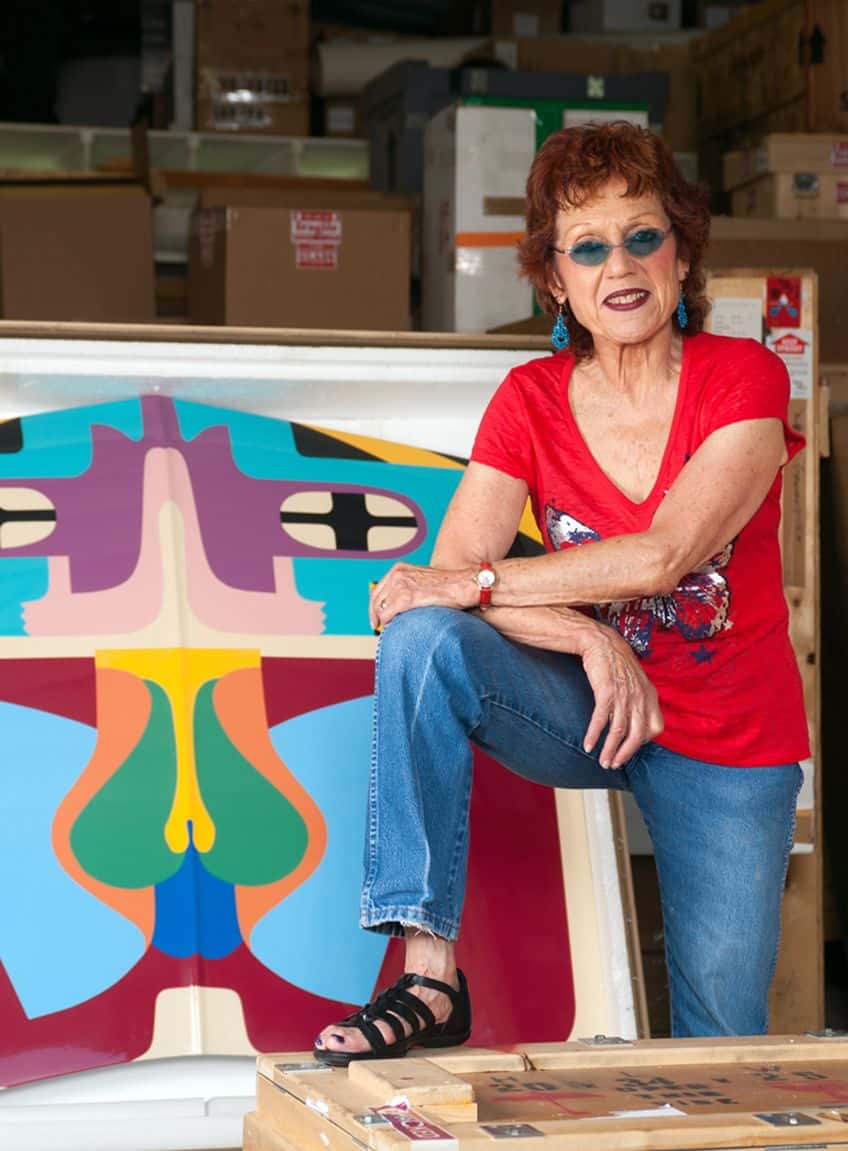
Performance Art
By using their bodies as a medium, performance artists such as Marina Abramović and Chris Burden pushed the limits of physical and emotional endurance. Abramović’s “Lips of Thomas” and Burden’s provocative acts left indelible marks on the art world, extending the scope of what could constitute an artwork.
Photorealism
Photorealism emerged as a counterpoint to Abstract Expressionism, with artists like Chuck Close creating highly detailed paintings indistinguishable from photographs.
Their works highlighted the marvels of everyday life and questioned the nature of art and perception.
Conceptual Art
Advocating ideas over aesthetic value, Conceptual Art turned towards intellectual inquiry, often using texts, maps, and diagrams to convey a concept. Artists like Vito Acconci epitomized the movement’s narrative by engaging the audience in thought-provoking interactions.
Land Art
Land Art, or Earthworks, brought the creative process into the open expanses of nature. Robert Smithson’s Spiral Jetty, a significant work in this category, constructed art in dialogue with the landscape, altering perceptions of space and time.

Street Art
Although still nascent in the 1970s, Street Art began to take shape, setting the stage for what would become a major cultural force. Artists employed public spaces to both beautify and communicate social commentary, foreshadowing the movement’s explosion in the coming decades.
Feminist Art
In response to the male-dominated art world, Feminist Art sought to reflect women’s experiences and challenge gender roles. Works like Judy Chicago’s “The Dinner Party” and media performances by Barbara Kruger and Lynda Benglis brought women’s perspectives to the forefront of artistic discourse.
The Influence of the Pop Art Movement
The Pop Art movement emerged as a major cultural force in the 1950s and 1960s, significantly influencing the direction of art into the 1970s. Iconic for its bold patterns and fascination with popular culture, it blurred the boundaries between “high” and “low” culture. In the dynamic art landscape of the 1970s, key influences reshaped artistic expression.
Artists embraced mass culture integration, seamlessly weaving imagery from advertising, comics, and consumer goods into their works, challenging traditional perceptions by elevating everyday objects into the realm of art.
Simultaneously, the era’s burgeoning celebrity culture found its reflection in Pop Art, where public figures became central subjects, serving as commentary on the commodification of fame and society’s growing obsession with celebrity. These influences propelled artistic innovation, blurring the lines between high and low culture and reshaping the visual language of the era.

In the 1970s, art techniques underwent a transformation. Bold colors and outlines brought a fresh aesthetic, contrasting with the abstract styles of the past. Techniques like silkscreen printing gained popularity, emphasizing mass production in art. These shifts redefined artistic expression, challenging traditional craftsmanship and accessibility norms, ushering in an era of innovation.
Pop Art played a critical role in democratizing art, making it accessible and relatable to the general public and conversely, validating popular culture through the lens of fine art. By the early 1970s, it served as a bridge, concluding the Modernism movement and setting the stage for postmodern art by questioning the exclusivity of art and its role within society.
Artists like Andy Warhol and Roy Lichtenstein became influential figures, leaving a legacy that continues to permeate contemporary art and culture.
Emergence of Minimalism
In the early 1960s, Minimalism emerged as a significant art movement, primarily in New York City. Artists began to explore extreme simplicity, focusing on form and material. This movement served as a counter-narrative to the emotionally charged and more complex art forms of the previous era, such as Abstract Expressionism.
In the realm of art during this period, simplicity reigned supreme as works were stripped to their most fundamental features.
Objectivity prevailed as artworks embodied literal qualities devoid of metaphor. Additionally, geometric shapes and precise, hard-edged compositions became prominent, reflecting a fascination with geometry. These key characteristics defined the era’s artistic landscape, encapsulating a movement towards clarity, directness, and geometric order in artistic expression.
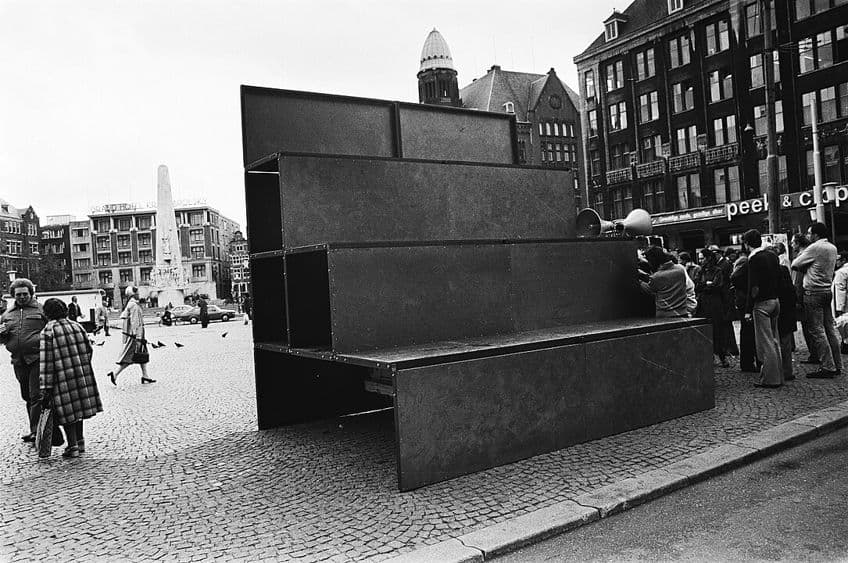
Artists renounced what they considered the overly intellectualized and historicized art of their predecessors. They sought purity through reduction and were influenced by a variety of earlier movements, including Constructivism and De Stijl, which emphasized geometry and functionalism. The approach of Minimalist artists was not merely visual but also philosophical, mirroring societal trends toward reduction and functionalism.
They often experimented with industrial materials and methods, distancing their work from traditional art techniques.
By the late 1960s, the movement had become a chief force in the art world, characterized by a focus on spatial concerns and viewer experiences. The reduction to essentials in form and content led to a kind of ‘objecthood’, distinct from the expressive abstraction that had dominated the prior decade.
Key Artists and Their Contributions
In the 1970s, artists like Robert Smithson, Judy Chicago, Marina Abramović, and others reshaped art with groundbreaking works and provocative performances. Chuck Close revolutionized portraiture, while Barbara Kruger critiqued consumer culture. Cindy Sherman explored identity, and Walter de Maria captivated with monumental earthworks. Allan Kaprow’s Happenings blurred art and life.
These artists, along with many others, contributed significantly to the rich and diverse landscape of 1970s art.
- Allan Kaprow (1927 – 2006) is remembered as a pioneer of Happenings, immersive and participatory art events that blurred the lines between art and life.
- Walter de Maria (1935 – 2013) is renowned for his monumental earthworks and minimalist sculptures, including The Lightning Field.
- Robert Smithson (1938 – 1973) is renowned for his pioneering work in land art, notably his iconic piece Spiral Jetty.
- Judy Chicago (1939 – Present) is celebrated for her groundbreaking feminist art, notably The Dinner Party.
- Marina Abramović (1946 – Present) is known for her provocative performance art, pushing the boundaries of endurance and audience interaction.
- Vito Acconci (1940 – 2017) was known for his innovative performance art and provocative installations, challenging notions of space and intimacy.
- Chuck Close (1940 – 2021) is recognized for his photorealistic portraits, pushing the boundaries of perception and representation.
- Barbara Kruger (1945 – Present) is acclaimed for her bold and politically charged text-based artworks, exploring themes of power and identity.
- Chris Burden (1946 – 2015) gained fame for his daring and often controversial performance pieces, such as Shoot and The L.A. Museum of Art.
- Ana Mendieta (1948 – 1985) is remembered for her powerful earthworks and performance art exploring themes of identity and nature.
- Cindy Sherman (1954 – Present) gained prominence for her groundbreaking photographic series, challenging stereotypes and exploring identity.
Social and Cultural Context
The 1970s art scene was inherently shaped by the dynamic societal changes and cultural shifts occurring during the decade. This period witnessed significant social upheaval, economic fluctuations, and a redefinition of gender roles which collectively influenced the creation and perception of art.

Influence of Social Upheaval
The 1970s in the United States were marked by intense social upheaval fueled by anti-war rallies and a push for LGBT rights. Visual art became a reflection of these movements, capturing the zeitgeist of the era. Artists used their work as a means to comment on and participate in the political discourse, leading to art that was not only to be appreciated aesthetically but also as a form of social activism.
The protests against the Vietnam War, for example, found their echoes in the raw and provocative street art and installations of the time.
Impact of Economic Changes
Economic changes, characterized at times by catastrophes such as inflation and unemployment, had a tangible impact on the art world. Limited financial resources led artists to adopt and embrace less traditional mediums and spaces, repurposing materials and exploring public spaces as viable venues for art. This economic pressure also played a part in the dematerialization of art, where the creation of art moved away from physical artifact to performance and conceptual pieces.

Evolution of Gender Roles
During the 1970s, gender roles evolved significantly, influenced by the burgeoning feminist movement. Feminist art emerged as a powerful force, with artists like Judy Chicago leading the charge. Their work challenged the patriarchal status quo and established a dialogue about the modern female masters and their place in history. Art during this time began to reflect and incorporate imagery and forms that connected to the historical experiences and contributions of women, pushing the boundaries of traditional interpretation and value in the art scene. Art in the 1970s was deeply intertwined with its context—time, place, and culture. As the United States grappled with its identity amid a changing social landscape, music, art, and culture evolved to mirror and sometimes challenge these developments.
The art produced was not just for consumption but also a space for conversation—a reflection of society’s triumphs, conflicts, and the complex fabric of its cultural dynamics.
Legacy of Art in the 1970s
The 1970s was a transformative decade that fostered significant developments in the art world. The era’s art is characterized by a dynamic blend of styles and the burgeoning of contemporary notions that still impact today’s practices. Artists became increasingly socially conscious, reflecting and shaping the cultural and socio-political landscape of the time.

The decade also saw a shift toward globalization in the art market, expanding the art landscape to include more diverse voices and international perspectives. Artists and movements from the 1970s laid down a conceptual framework that encourages continuous experimentation and intellectual inquiry in today’s art. This period’s influence can be seen in current practices that fuse art and life, and in the critical stance artists take towards the status quo. The 1970s cemented a crucial link between the artist’s role as both creator and commentator, a tradition that persists robustly in the present.
As we bid adieu to the dazzling world of 1970s art, one thing becomes abundantly clear: the spirit of experimentation and liberation that characterized this era continues to inspire and captivate us to this day. From the pulsating beats of Studio 54 to the gritty streets where graffiti became an art form, the 1970s gifted us with a cornucopia of creativity and a kaleidoscope of colors. As we reflect on the era’s disco fever and avant-garde movements, let us carry forward its legacy of fearless innovation and boundless imagination into the art of tomorrow. The 1970s may have ended, but its artistic legacy lives on, forever etched in the annals of cultural history. Cheers to the groovy decade that dared to dream and dared to defy!
Frequently Asked Questions
Who Were the Leading Figures in the Pop Art Movement During the 1970s?
Major figures in the Pop Art movement during the 1970s included artists like Andy Warhol and Roy Lichtenstein. Their work continued to influence the art scene, even as Pop Art’s prominence began to wane in favor of other emerging styles.
What Were the Defining Characteristics of 1970s Art Style?
The 1970s art style was marked by continued experimentation and the use of bold colors and abstract designs. Artists from this era often challenged traditional boundaries and embraced a variety of media and techniques, reflecting the decade’s spirit of innovation.
How Did the Events of the 1970s Influence the Art Created During That Time?
The 1970s was a decade marked by economic recession, social unrest, and questioning of authority, all of which shaped the art of the time. Economic challenges led to a focus on more accessible art forms, while social movements encouraged artists to address contemporary issues and reflect on personal and collective identities.
Isabella studied at the University of Cape Town in South Africa and graduated with a Bachelor of Arts majoring in English Literature & Language and Psychology. Throughout her undergraduate years, she took Art History as an additional subject and absolutely loved it. Building on from her art history knowledge that began in high school, art has always been a particular area of fascination for her. From learning about artworks previously unknown to her, or sharpening her existing understanding of specific works, the ability to continue learning within this interesting sphere excites her greatly.
Her focal points of interest in art history encompass profiling specific artists and art movements, as it is these areas where she is able to really dig deep into the rich narrative of the art world. Additionally, she particularly enjoys exploring the different artistic styles of the 20th century, as well as the important impact that female artists have had on the development of art history.
Learn more about Isabella Meyer and the Art in Context Team.
Cite this Article
Isabella, Meyer, “1970s Art – Trace the Emergence of the Counterculture.” Art in Context. February 21, 2024. URL: https://artincontext.org/1970s-art/
Meyer, I. (2024, 21 February). 1970s Art – Trace the Emergence of the Counterculture. Art in Context. https://artincontext.org/1970s-art/
Meyer, Isabella. “1970s Art – Trace the Emergence of the Counterculture.” Art in Context, February 21, 2024. https://artincontext.org/1970s-art/.



